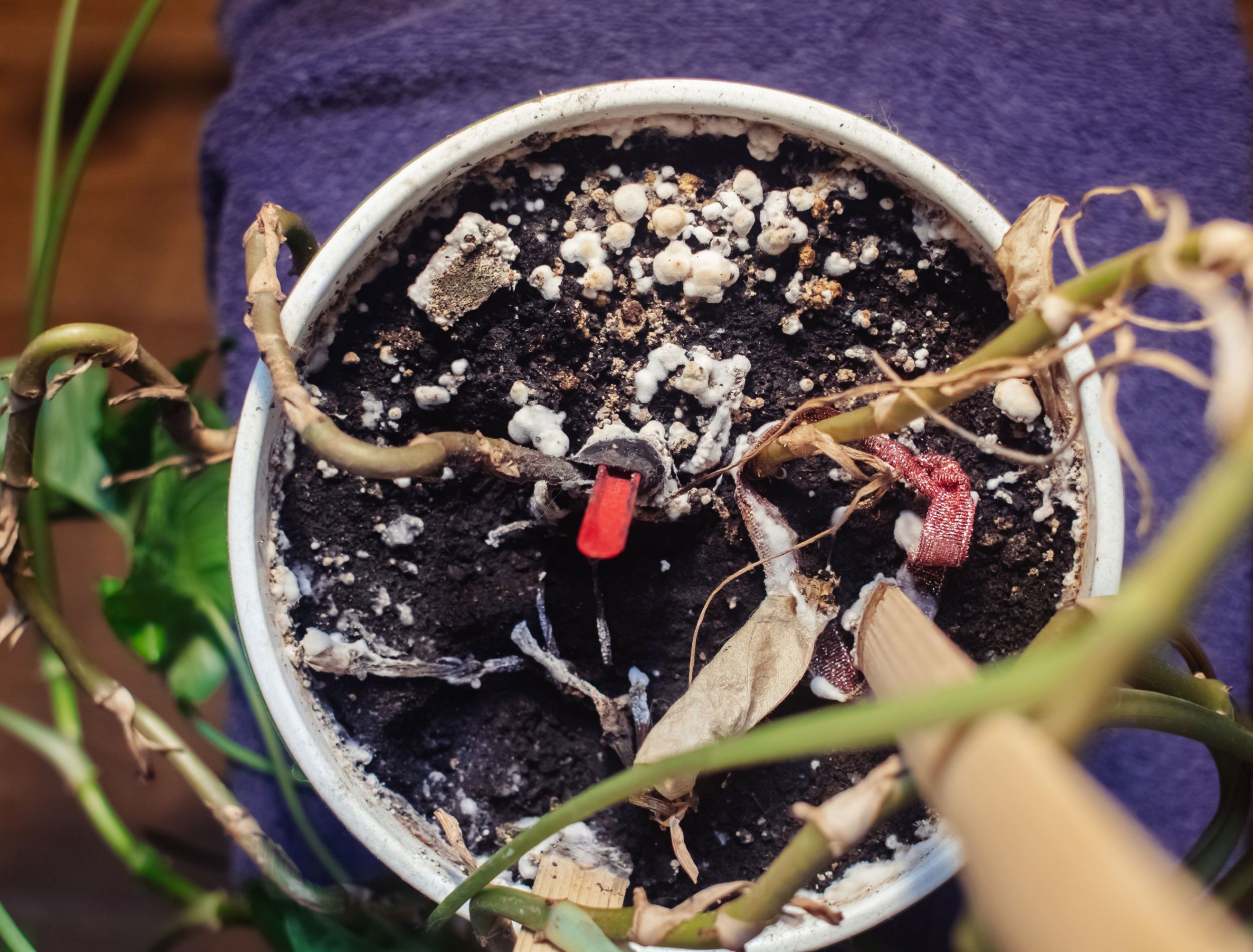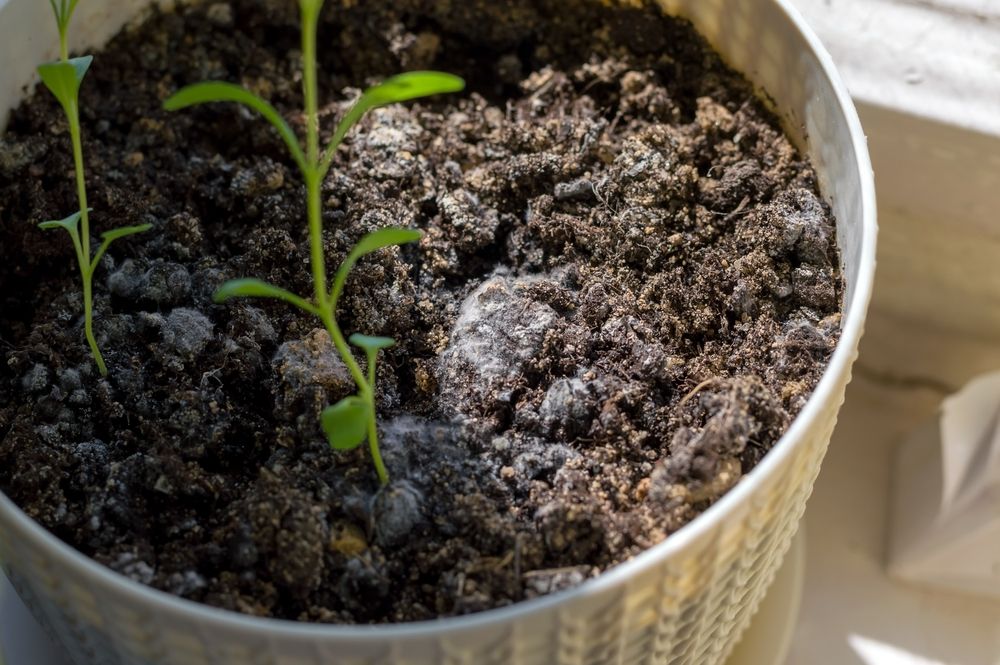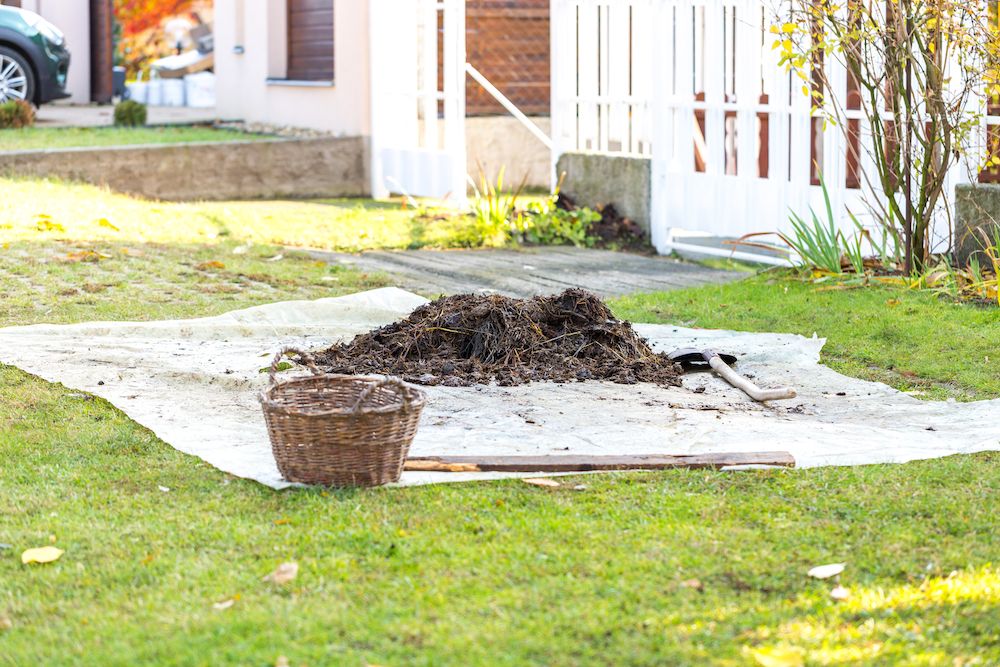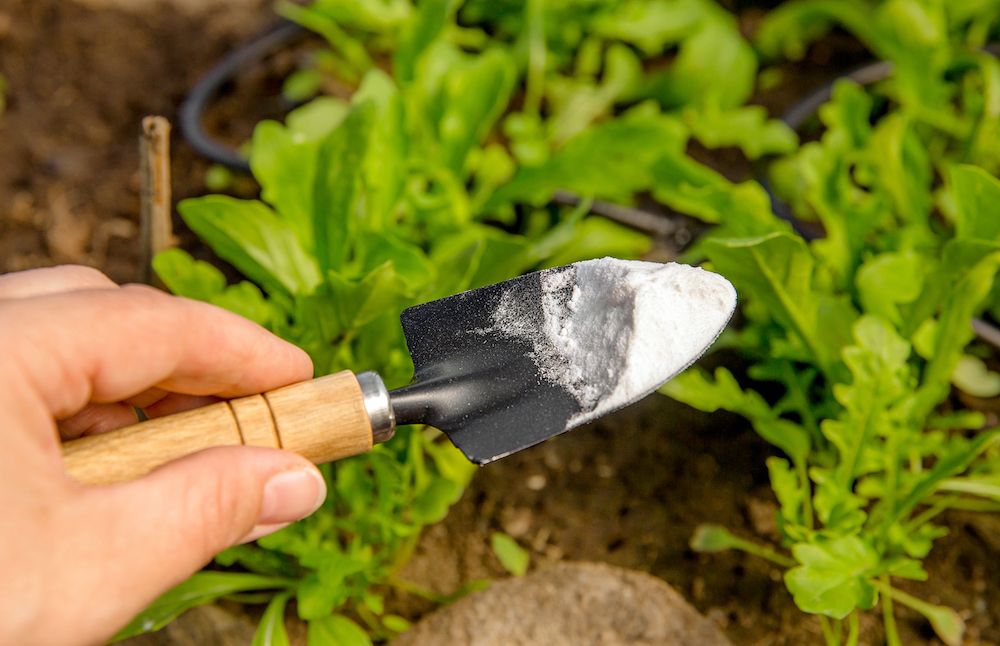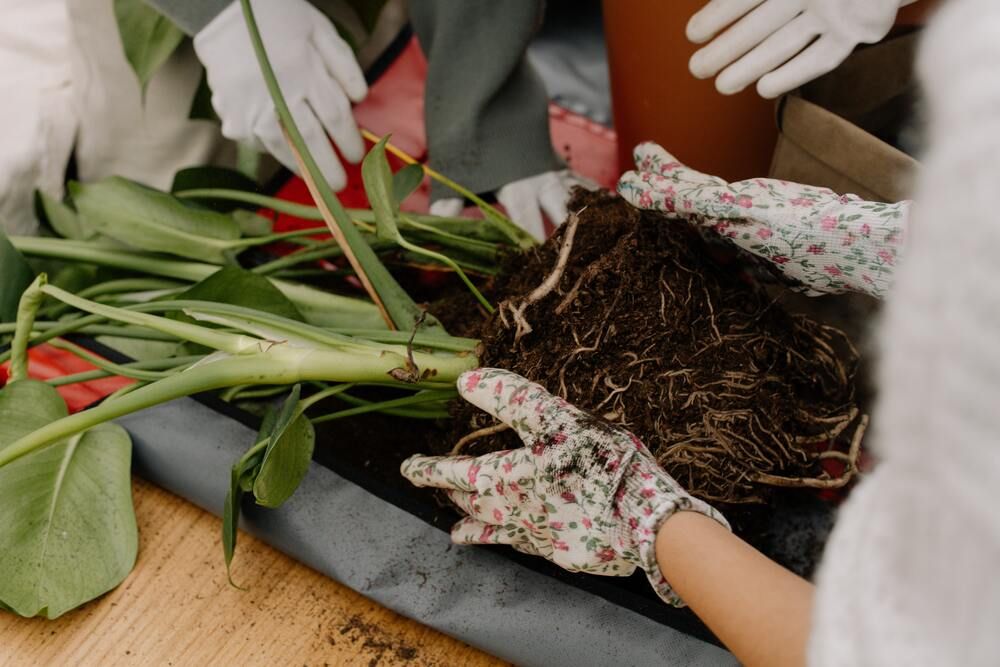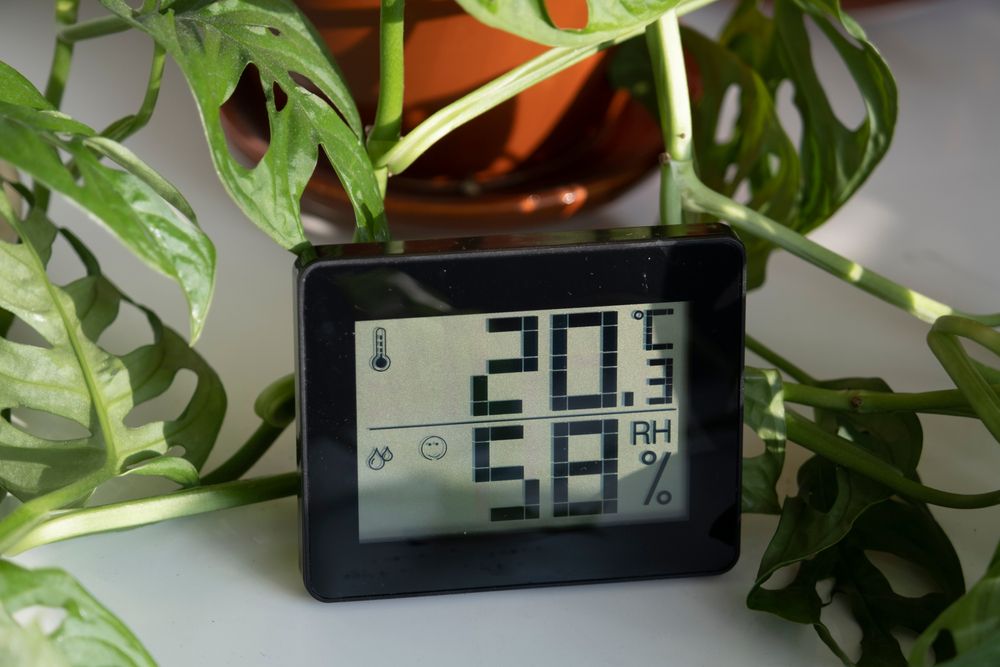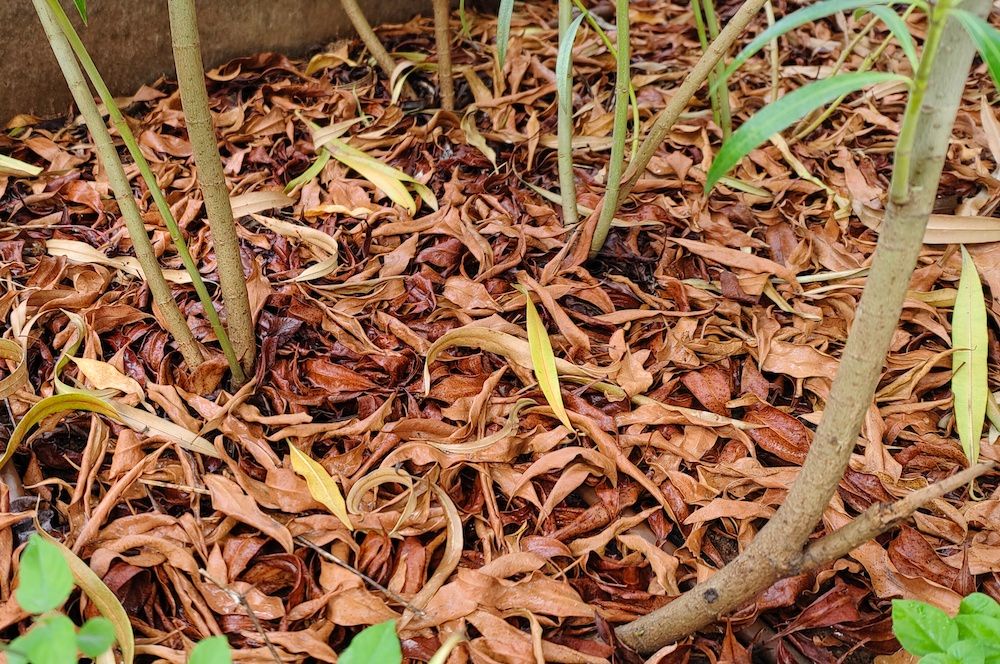Seeing mold in your houseplant's soil can leave you petrified, especially since soil plays a significant role in your plant's life. Is it something you did that's causing the mold, or did it grow out of thin air?
If you rarely overwater your plant and are sure the soil has good drainage and aeration abilities, seeing a layer of mold can be disappointing. But before you panic, know that mold is harmless. Although you'll need to act fast because it can create an environment that will harm your plants.
So, Why Did the Soil Get Moldy?
Image credits: Perova Evgeniya via Shutterstock
There are many kinds of mold, but white mold (Sclerotinia sclerotiorum) is the most common one that grows in houseplant soil. White mold thrives in humid conditions and can quickly create a hostile environment for your plant.
While mold isn't an immediate threat, you'll need to act fast before it attracts other pathogens and pests, including fungus gnats, that can harm your plants and even kill seedlings. Here are the three main reasons why your houseplant soil got moldy:
1. Overwatering
Plants can't talk, but their sign language is out of this world! Understanding when your plants need water will prevent overwatering, which is one of the leading causes of white mold. If you're still unsure, testing your soil's moisture is a great way to tell if your plants need a drink. Underwatering will help you prevent mold and root rot.
2. Poor Drainage
Your plant might be suffering due to poor drainage. After acing your watering game, check your soil's structure and ensure a healthy balance between water retention and drainage. Amend your soil with granite, sand, or perlite to improve drainage and aeration. Ensure your plant pot has drainage holes, or invest in self-watering planters for healthy plant growth.
3. Soil Contamination
Finally, check the soil you're using to see if that's the cause of white mold. If the soil is contaminated, it'll continue to sprout mold, regardless of how well you care for your plant. Bad potting soil, a moldy one, or one that hasn't been stored well can quickly attract harmful pathogens which can affect your plant.
5 Tips for What to Do About Mold in Houseplant Soil
Getting rid of mold isn't difficult, but it's not as easy as scraping out the top layer of your moldy soil. However, this doesn't mean you should toss out your pot and plant. You can do a few things to save your plant and refresh your soil.
1. Dry Out the Potting Soil
Image credits: Tynka via Shutterstock
Drying your potting soil under direct sunlight is an excellent first step to rule out overwatering concerns. Lay out a large tarp, spread your houseplant soil on it, and let it sterilize and dry for half a day or more, depending on the soil's moisture.
You can scoop the top layer of the soil along with the mold if you don't want to remove your plant, but that won't solve the issue. The mold will likely return the moment you water the soil.
2. Use Baking Soda
Image credits: FotoHelin via Canva
Baking soda is your houseplant's best friend. Apart from neutralizing acidic soil and keeping pests like spider mites, ants, and aphids away, baking soda helps treat powdery mildew and mold.
If you haven't removed your plant from the pot, spray the entire plant with a mixture of one teaspoon of baking soda, a few drops of mild dish soap, and a quart of warm water.
If you spread the soil on a large tarp, mist the soil with a mixture of four teaspoons of baking soda and one gallon of water to prevent the onset of a fungal outbreak. After misting, let the soil bake and dry under direct sunlight for a few hours.
3. Repot Your Plants
Image credits: cottonbro via Pexels
The fastest and simplest solution is repotting your houseplant while letting the moldy soil bake under direct sunlight. When repotting, be gentle, and don't forget to account for transplant shock. If you'll use the same container, clean and sterilize it before reusing it to prevent the mold from returning.
After removing your plant, clean and lightly spray the container with a fungicide to kill the mold spores that survived the cleaning. For organic gardening, check out Garden Safe Fungicide or the Bonide Sulfur Plant Fungicide Dust if you’re looking for a more budget-friendly option.
If you don't have access to commercial fungicides, you can make your own by mixing one part household bleach with nine parts water. Remember to wear your gloves, goggles, and mask before handling bleach. Soak your container in this solution for 10 minutes and let it air dry in a shaded area.
When repotting, fill the clean container with sterilized soil, remove old soil from your plant's roots, prune infected or diseased roots, and then put the plant back in its container. Invest in a good moisture tester to prevent under and overwatering.
4. Control Light and Humidity
Image credits: D.L.Sakharova via Shuterstock
Not all plants require high humidity levels to thrive; therefore, it's essential to understand your plant's humidity requirements to prevent mold from returning to your houseplant soil.
Apart from humidity levels, place your plant in an area where they receive direct and dappled sunlight, partial and deep shade, and plenty of air circulation. Mold thrives in dark, cold, wet, and humid conditions and can't survive in warm, well-aerated, well-lit, and moist to semi-dry conditions.
5. Clear Out All Debris
Image credit: Lakeisha Ethans for Backyard Boss
You can mulch leaves instead of raking them, which comes with the added risk of mold. Fallen leaves often trap moisture in the ground and prevent air circulation, a recipe for white mold. You can do many things with fallen leavesinstead including using them in compost, lasagna gardens, or keyhole gardens.
Don't Grow Mold!
Seeing mold in your houseplant soil can throw you off your gardening game. However, before you toss out your plant and pot, there are a few ways to remove the mold before it harms your plant.
Although mold is harmless, you'll need to act fast because it can attract other pathogens and pests that can damage your plant. Measuring moisture, light, and humidity is key to healthy plant growth.
Leave your experiences, thoughts, and questions in the comment section! And share with friends and family who might find this helpful.
Happy gardening!

